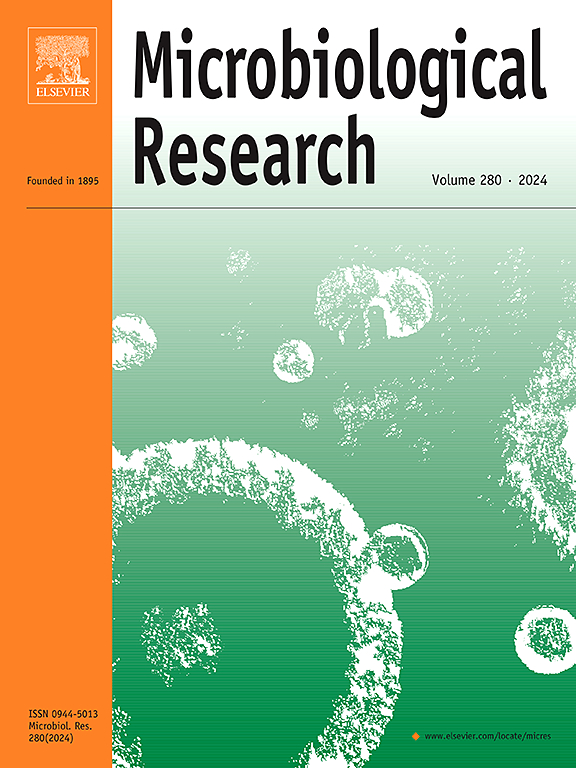亮氨酸对线粒体和氧化应激的影响可降低鲍曼不动杆菌的毒力和致病性。
IF 6.1
1区 生物学
Q1 MICROBIOLOGY
引用次数: 0
摘要
阐明鲍曼不动杆菌的致病机制对于制定减轻致病性的策略至关重要。虽然高毒力菌株与严重感染患者的死亡率增加有关,但其潜在机制仍不十分清楚。我们的分析显示,亮氨酸是一个关键的生物标志物,11dP 和 paaK 也是致病力的重要因素。ATP依赖性活性和抗氧化活性被认为是区分鲍曼不动杆菌毒力的最重要途径。研究发现,外源性亮氨酸可调节线粒体功能障碍和氧化应激,从而降低鲍曼不动杆菌对 Beas 2B 细胞的致病性。此外,亮氨酸还降低了鲍曼尼氏菌对小白鼠(G. mellonella)的毒力,减轻了小白鼠肺组织的病理损伤。我们的研究提供了一种基于代谢组学的新型治疗策略,它可能有助于探索和管理由高致病性病原体引起的感染。它为减少高致病性鲍曼不动杆菌感染的影响开辟了一条新途径,对未来治疗干预措施的开发具有重要意义。本文章由计算机程序翻译,如有差异,请以英文原文为准。
Effect of leucine on mitochondria and oxidative stress to reduce virulence and pathogenicity of Acinetobacter baumannii
Elucidating the virulence mechanisms of A. baumannii is essential for developing strategies to mitigate pathogenicity. Although high-virulent strains are associated with increased mortality rate in severely infected patients, the underlying mechanisms remains not well understood. Our analysis revealed leucine as a pivotal biomarker, with the 11dP and paaK being significant contributors to virulence. The ATP-dependent activity and antioxidant activity were identified as the most important pathways in distinguishing the virulence of A. baumannii. Exogenous leucine was found to modulate mitochondria dysfunction and oxidative stress, thereby diminishing the pathogenicity of A. baumannii towards Beas 2B cells. Moreover, leucine reduced the virulence of A. baumannii to Galleria mellonella (G. mellonella) and alleviated pathological damage to lung tissues in mice. Our study offers a novel treatment strategy based on metabolomics, which may assist in the exploration and management of infections caused by highly virulent pathogens. It sets a new course for reducing the impact of highly virulent A. baumannii infections and has significant implications for the development of future therapeutic interventions.
求助全文
通过发布文献求助,成功后即可免费获取论文全文。
去求助
来源期刊

Microbiological research
生物-微生物学
CiteScore
10.90
自引率
6.00%
发文量
249
审稿时长
29 days
期刊介绍:
Microbiological Research is devoted to publishing reports on prokaryotic and eukaryotic microorganisms such as yeasts, fungi, bacteria, archaea, and protozoa. Research on interactions between pathogenic microorganisms and their environment or hosts are also covered.
 求助内容:
求助内容: 应助结果提醒方式:
应助结果提醒方式:


